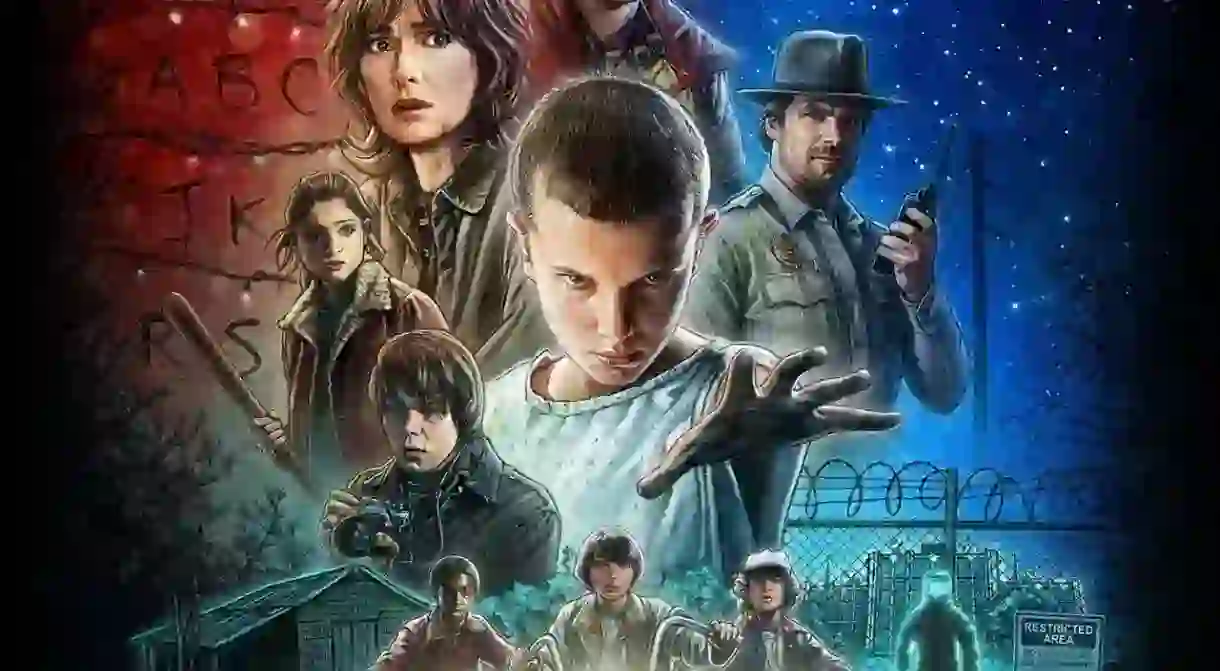Why 'Stranger Things' Is The Best Show On Netflix

If you haven’t discovered Stranger Things yet, here are five reasons why you should stop what you’re doing and watch the Netflix original series right now.
The nostalgic sci-fi series Stranger Things has dominated the summer television landscape, quickly earning cult status and spawning legions of fans who pepper social media with their art, playlists, speculative theories, and proclaiming of newfound celebrity obsessions.
In the eight episodes of the inaugural season, the show’s creators the Duffer Brothers conjured a rich and complex world that draws heavily on ’80s nostalgia, mold-breaking scripts, and a killer soundtrack. Whether you’re marinating in the afterglow or have yet to start watching, here’s a rundown of what makes the series so damn good.

The ’80s nostalgia is on point
Nostalgia is a mainstay of the series, which takes place in 1983. Writer-creator-directors the Duffer Brothers have paid meticulous attention to period detail from Karen Wheeler’s Farrah Fawcett coif to Eleven’s obsession with Eggo Waffles to the boys’ fascination with ham radio and walkie talkies. The series is primarily told from the perspective of Mike, Dustin, and Lucas, the lovable 12-year-old nerds on a mission to find their missing friend, Will.
Their hunt draws heavily from nerdtastic ’80s sensibility – their hypotheses are spawned and substantiated by a litany of cultural referents like fantasy role-playing game Dungeons & Dragons, Return of the Jedi, and The Uncanny X-Men comic book series. The characters’ subcultural savvy adds a clever dimension, going beyond superficial trappings to render the Reagan era in earnest.
Furthermore, the Duffer Brothers’ directorial homages to kings of 80s cinema seal the deal: the band of kids on bikes draws from Steven Spielberg’s E.T. and Close Encounters of the Third Kind and the incremental reveal of Eleven’s powers from Jaws; the ‘Upside Down’s’ otherworldly monster bears aesthetic similarities to Ridley Scott’s and James Cameron’s Alien(s); and the small town with a sordid, supernatural secret seems to mirror David Lynch’s Twin Peaks – to name only a few.

The young cast is stellar
Though the main characters of Stranger Things are kids, the series is quite adult with deeply written roles and an excellent cast. The young actors bring maturity beyond their years to the leading roles. Millie Bobby Brown is show-stopping as Eleven, the girl with mysterious psychokinetic abilities. For a role with such few words, Brown’s presence is fiercely commanding.
Mike, Dustin and Lucas’ strong and charismatic rapport immediately endears the audience to the band of outcast best friends. Finn Wolfhard’s frustrated but passionate ethos, and his sensitivity with fellow outsider Eleven, infuses his character Mike with the emotional intensity of pre-teendom. Gaten Matarazzo is Dustin, the adorable toothless sage who plays mature and even-keeled mediator between bright-eyed Mike’s eagerness and Lucas’ (Caleb McLaughlin) skepticism.

The music rules
The compelling score, written by Kyle Dixon and Michael Stein from the Austin, TX band S U R V I V E, juxtaposes throbbing beats and glittering synths to create spacey and suspenseful sequences befitting the mood of the series. Dixon and Stein count John Carpenter’s The Thing and German electronic music collective Tangerine Dream among their influences, but the synths also bear a resemblance to rhythmic undulation of the X-Files theme and the ominous hum in the title sequence of ’80s TV classic Tales From The Darkside.
After much acclaim from internet fans, an official Stranger Things, Vol. 1 soundtrack was released. While the score is impressive on its own, the series also nods its head to classic bands of the day like the Clash, Toto, Echo and The Bunnymen, and Joy Division.
https://www.youtube.com/watch?v=FpHNlx0pPIU
There are no damsels in sight
The female characters in Stranger Things are convincingly strong and authentically flawed, unchained from traditional female tropes. Winona Ryder brings a ferocity to the role of Joyce Byers, who is so hell-bent on finding her missing son Will that she turns to seemingly fantastical theories, further ostracizing her from her provincial community. Ryder has brought more than a few beloved alt girls to life in her career – most notably, Beetlejuice’s goth outcast Lydia Deetz and vengeful prepster Veronica Sawyer in Heathers, making her a clever choice for a series so thoroughly steeped in ‘80s-ness.

Despite her power, the aforementioned Eleven is timid at first, having escaped the trauma of mysterious government experimentations. As the series progresses and she acclimates to autonomy and the real world, she displays an immense, if stoic, courage and profound selflessness. The boys come to depend on her knowledge and abilities in their search for Will.
The unsung heroes of the series are Nancy and Karen Wheeler, Mike’s sister and mother. Nancy is not just a ‘good girl,’ she’s a smart girl. Throughout the season, she reveals a strong moral compass through teenage trials and tribulations and a brave, enterprising spirit as she searches for her missing friend, Barb. Finally, Karen Wheeler brings dimension to the concerned mother stereotype. Though she’s always a step behind the kids (ain’t that the way), she’s compassionate and earnest in navigating the difficulty of parenthood. Plus, she clearly wears the pants in the Wheeler household.
It keeps you wanting more without cheesy cliffhangers
Without saying too much as to spoil it, the show provides closure to its most significant plot line but leaves enough unanswered questions to keep the audience wanting more. As we’ve seen with so many shows clamoring for binge-worthy status these days, striking this balance requires finesse to keep from being cheesy or cheap. Bring on the second series!














